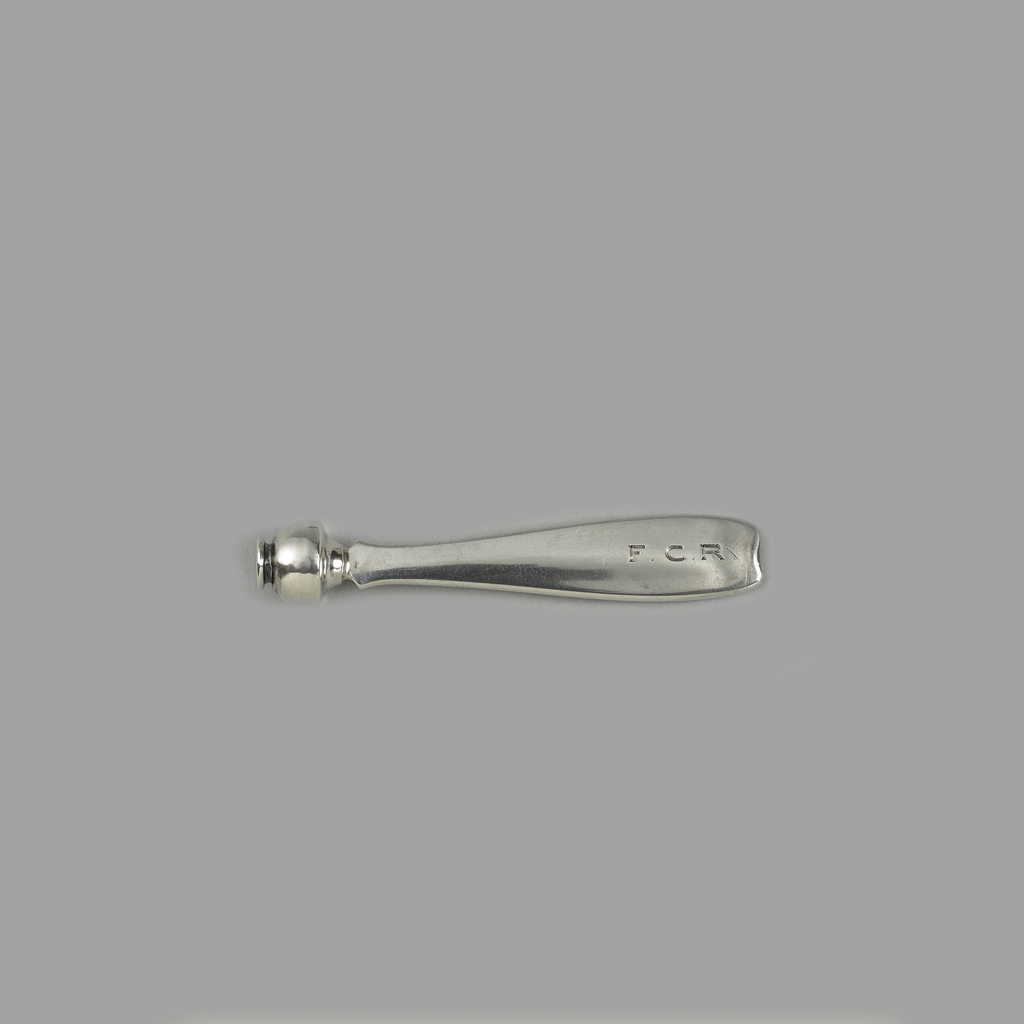See more objects with the color dimgrey silver or see all the colors for this object.
Object Timeline
|
1955 |
|
|
1965 |
|
|
2012 |
|
|
2013 |
|
|
2024 |
|
Telephone Dialer (USA)
This is a Telephone dialer. It was made by Tiffany and Co.. It is dated ca. 1960 and we acquired it in 2012. Its medium is silver. It is a part of the Product Design and Decorative Arts department.
This Tiffany & Co. telephone dialer is an artifact that demonstrates the intersection of American telecommunications history and mid-century domestic culture. The first patent for a rotary dial telephone was issued in 1882. The modern version of the rotary dial with finger holes was introduced in 1904 but did not enter service in the Bell System until 1919. Rotary dial technology remained unchallenged until the early 1960s, when dual-tone multi-frequency pushbutton dialing that used a keypad instead of a dial was introduced at the 1962 Seattle World’s Fair (also known as the Century 21 Exposition). The touchtone phone, however, did not become dominant until the 1980s, thus giving a long life to the use of this elegant accessory.
The main function of the telephone dialer was to create a sense of ease when placing a phone call, as it was meant to prevent finger soreness or chipped nails caused by repeated dialing and could remain in place in the dial when not in use. Available in a variety of styles and media, telephone dialers were extremely popular in the 1950s and 60s. During the latter decade, the Tiffany & Co. telephone dialer sold for $6, with 20,000 to 30,000 dialers sold per year. These specialized objects were part of a group of items priced under $100 that maintained the Tiffany standard of high quality while serving as part of a marketing effort to attract new, upwardly mobile customers. Telephone dialers became standard housewarming and corporate gifts. Tiffany & Co. advertisements highlighted the dialer’s sleek design and ease of use. As seen in this example, monograms could be added to the handle of the dialer, thus personalizing a stock item and creating a bespoke product. In 1963, Tiffany & Co. introduced a more luxurious product, a three-in-one telephone dialer, letter opener, and pop-out 14k gold pencil for $100. The solo dialer remained an affordable entrée into the Tiffany & Co. brand.
The telephone dialer also reflects mid-20th-century attitudes towards women when it is considered as both a beauty item and an accessory for social contact. It speaks to the increased use of the phone in the home by housewives as well as in the workplace by (predominantly female) secretaries. The dialer targeted this audience with a focus on personal appearance: the hands and nails. It also demonstrates the greater use of the phone as a social vehicle; increasing acceptance of the phone call instead of the penned note changed the role of the phone for women. The 1962 classic motion picture, Breakfast at Tiffany’s, which included a scene in which Audrey Hepburn and George Peppard consider the purchase of a telephone dialer at the Tiffany store, helped immortalize the object and increased its appeal. In 1963, the model 1500 telephone ushered in the era of touch-tone calling. Pressing buttons on a telephone keypad gradually replaced the use of the rotary dial, and continues today an era of mobile phone keypads and smart phone touch screens. Touch-tone dialing made the function of the dialer obsolete.
This acquisition would supplement the museum’s collection of mid century domestic objects as an accessory to a piece of communications technology, as a new form for silver, and as an object of social commentary. It would be a fine companion piece in exhibition with the model 500 rotary telephone in particular, an example of which is in the collection. Designed by Henry Dreyfuss and Associates, the model was the most commonly used telephone in both domestic and office settings from 1949 to 1984. The telephone dialer references a specific moment of domestic change when, starting in 1953, households could direct-dial long numbers, including an area code and seven-digit phone number, without the assistance of an operator.
This object was featured in our Object of the Week series in a post titled Before phones became gifts.
It is credited Gift of Henrie Jo Barth.
- Grip Flashlight
- silicone rubber, led light source.
- Gift of George R. Kravis II.
- 2012-20-1
Its dimensions are
L x W x D: 7.3 x 1.3 x 1 cm (2 7/8 x 1/2 x 3/8 in.)
It has the following markings
Stamped on handle: "TIFFANY& CO. STERLING m" (in script)
It is inscribed
Monogram on handle: "FCR"
Cite this object as
Telephone Dialer (USA); Made by Tiffany and Co. (United States); silver; L x W x D: 7.3 x 1.3 x 1 cm (2 7/8 x 1/2 x 3/8 in.); Gift of Henrie Jo Barth; 2012-10-1

